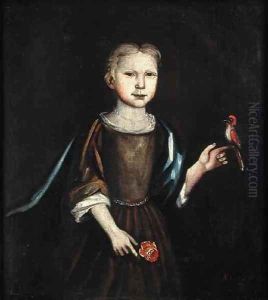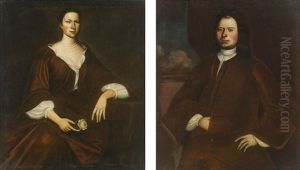Nehemiah Partridge Paintings
Nehemiah Partridge was a colonial American painter who is known for his portraits, particularly of the upper-class families in the New York and New England areas during the early 18th century. While there is limited information about his life, Partridge is believed to have been born around 1683, possibly in the Hudson River Valley of New York. His work suggests that he was influenced by English portrait traditions, which he adapted to his colonial context.
Partridge's career spanned a relatively short period, from about 1700 until his presumed death around 1737. During this time, he became one of the early practitioner of portraiture in the American colonies, at a time when there were only a handful of portrait artists working in this region. His clients were often wealthy merchants, landowners, and officials who desired to have their status and prosperity commemorated through portraiture.
His paintings are characterized by a certain naiveté in technique and composition, which was typical of many colonial artists who were largely self-taught or had limited access to formal training. Nevertheless, Partridge's work contains a level of detail and an understanding of his subjects that suggest a natural talent for portraiture. His paintings often feature richly dressed figures set against plain or abstract backgrounds, with attention paid to the textiles and lacework of the period garments.
While the exact details of Partridge's life and training remain obscure, his surviving works are an important record of the early American artistic tradition and provide valuable insights into the society and culture of the time. Partridge's portraits are considered significant within the context of American art history as they represent some of the earliest examples of colonial portraiture and the emerging American identity separate from European influence.

